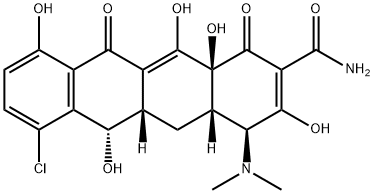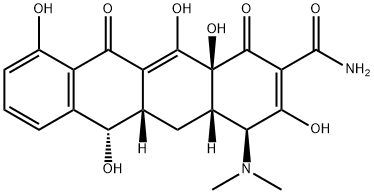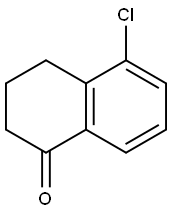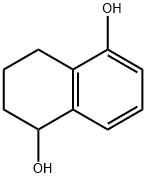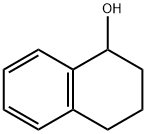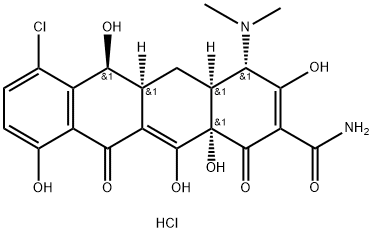PRODUCT Properties
| Melting point: | 176°C (rough estimate) |
| Boiling point: | 787.1±60.0 °C(Predicted) |
| Density | 1.3118 (rough estimate) |
| refractive index | 1.6000 (estimate) |
| solubility | H2O:1.5(Max Conc. mg/mL);3.23(Max Conc. mM) |
| form | Solid |
| pka | 4.50±1.00(Predicted) |
| color | Green to dark green |
| Water Solubility | 1.4g/L(25 ºC) |
Description and Uses
Demethylchlortetracycline was isolated from the culture broth of a mutant of Streptomyces aureofaciens, the chlortetracycline-producing strain, by Lederle Research Laboratories in 1957. It shows one and one-half to two times as much in vitro antimicrobial activity and in vivo protective effect as tetracycline. Its base and hydrochloride have been used orally and by topical application to treat infections caused by Staphylococcus, Streptococcus, Rickettsia, Chlamydiae, Neisseria, Klebsiella, Proteus, Escherichia coli, and Haemophilus influenzae.
Demeclocycline, a chlortetracycline analogue produced by a mutagenised strain of Streptomyces aureofaciens, was first isolated in 1957. Like all tetracyclines, demeclocycline shows broad spectrum antibacterial and antiprotozoan activity and acts by binding to the 30S and 50S ribosomal subunits, blocking protein synthesis. Demeclocycline has been extensively cited in the literature with over 800 references relating almost exclusively to in vivo use.
Safety
| Hazardous Substances Data | 127-33-3(Hazardous Substances Data) |

